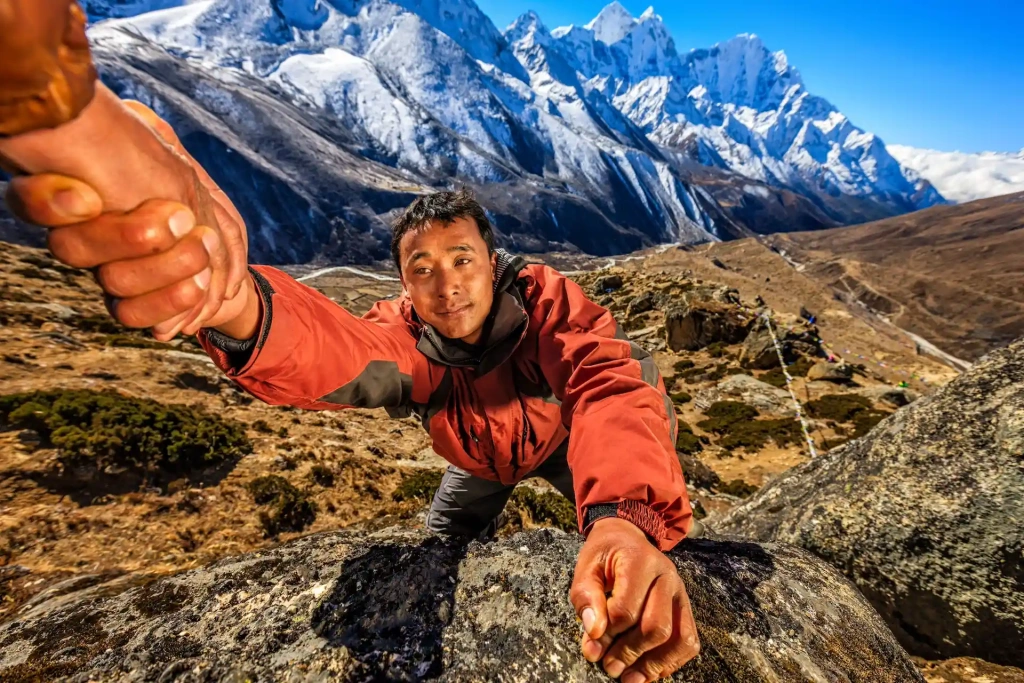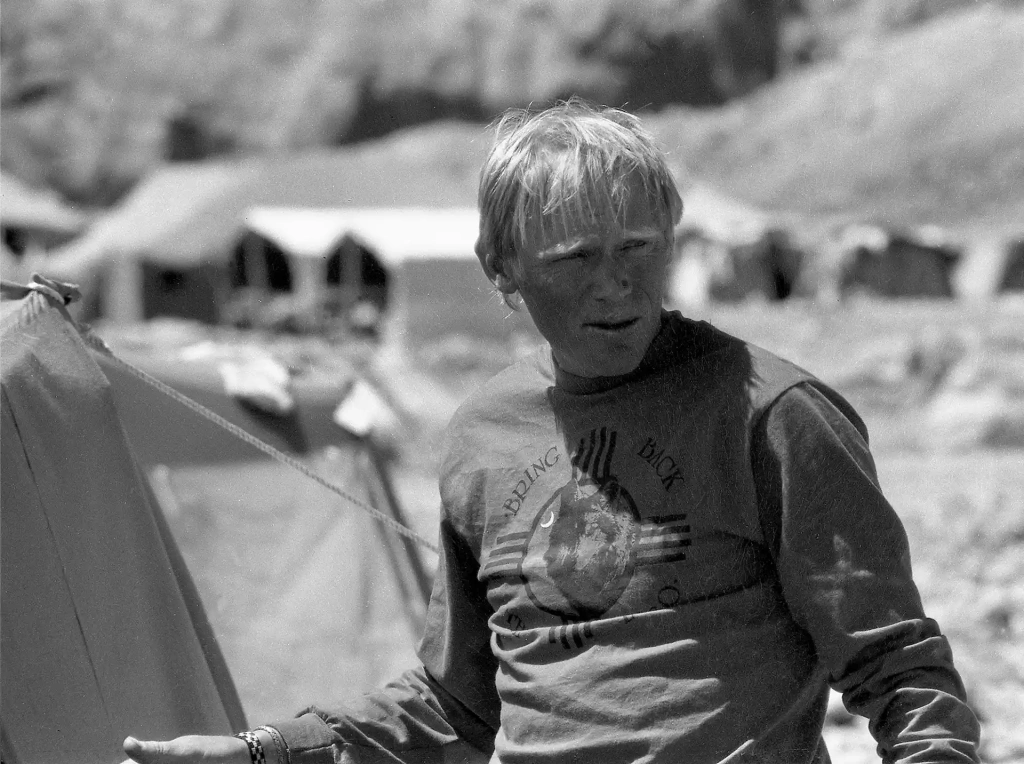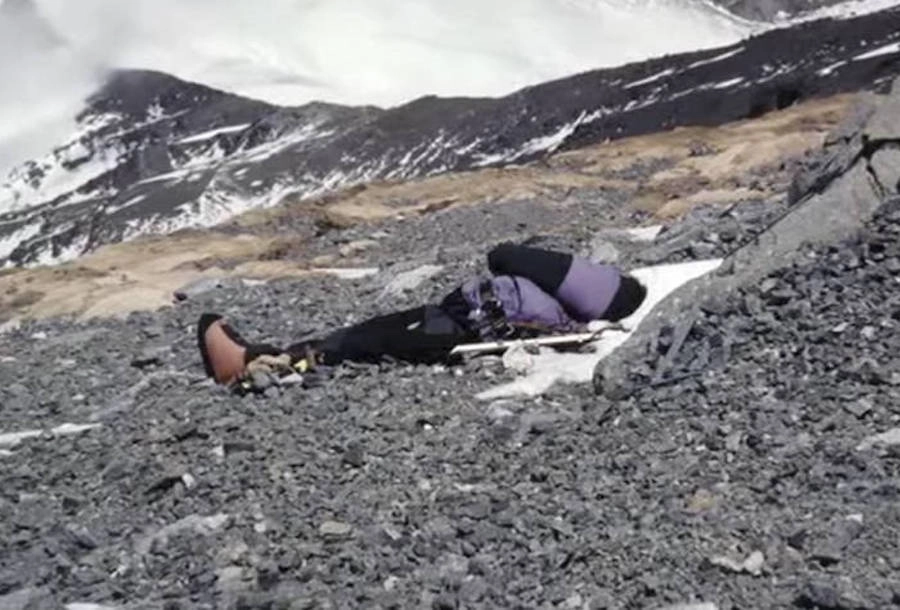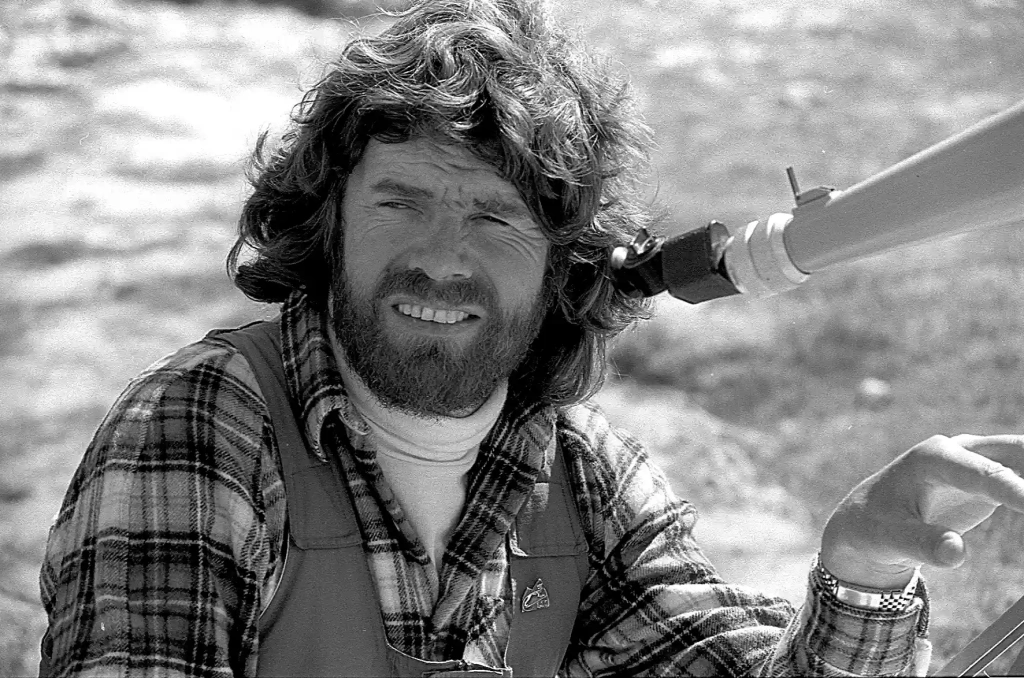How and why people die on Mount Everest
Where are you reading this text? Most likely, at an altitude of no more than 500 meters (1640 feet) above sea level. It’s rare for a European or US city to exceed this mark. At altitudes close to sea level, even when it gets very cold, the body has enough strength to keep itself warm, and the brain receives enough oxygen to function normally.
High altitude is another matter. Such an environment is hostile to humans and requires incredible efforts to perform the simplest actions. On Everest and other Himalayan peaks, altitudes over 8,000 meters (26,000 feet) are poetically and ominously called the Death Zone. But there is nothing poetic about it: the body has to work at the limits of its capabilities. Tragic accidents are not surprising when climbers choose to brave those heights.
How many people died on Mount Everest?
The mortality rate on Everest is about 2% of all climbers. This figure might not seem shocking. Proportionally, true "killer mountains" claim far more lives. For instance, K2 where almost every fourth climber dies, or Kangchenjunga, claiming the life of every fifth.
However, due to its popularity and "accessibility," the number of deaths on Everest is tragic. Out of more than 7,000 ascents (not including repeat climbs), the mountain has been fatal for over three hundred people. And some of their dead bodies still lie near the summit of the highest peak in the world.
What was the worst year for deaths on Everest?
People attempting to climb Everest die every season, but some years are particularly "fruitful". In 1922, seven people perished under an avalanche. During the season of 1996 — fifteen climbers died. In April 2014 sixteen people lost their lives due to the collapse of a . A year later, a devastating earthquake occurred, and the resulting avalanche claimed the lives of eighteen people.
George Mallory's death in 1924
The first successful ascent of Everest was only accomplished in 1953, but attempts to reach the Everest summit had been made earlier. The most famous of these were three British expeditions of 1921–24.
The first was necessary for surveying and preparation — unlike today, there was no infrastructure leading to the mountain back then. During the second expedition, the team reached an unprecedented at the time altitude of 7,770 meters (25,492 feet) and then retreated to storm the summit with new strength the following year.
One of the leaders of the British climbers was 37-year-old George Mallory. Archival records and letters testify: he immersed himself in the role of a Mount Everest conqueror and already considered the summit his own. At the same time, there is speculation that Mallory realized the impossibility of reaching the summit in 1924. He wanted to scout the route, test the oxygen equipment, and secure his place in the team to summit Everest the following year. But fate decided otherwise.
The body of George Mallory was found 75 years later at an altitude of 8,155 meters (26,758 feet). There are still debates about whether Mallory and Andrew Irvine, his climbing partner, were at the summit. Logic says no. With their level of equipment and gear, it was impossible to reach the summit. But in Mallory's documents found with him, there was no photograph of his wife and the British flag. He had promised to leave them on the summit…The body of his partner Irvine has not been found to this day.
The tragedy of 1996
The disaster that unfolded on the mountain led to the death of eight climbers. The events of May 10–11, 1996, have been documented in several books and inspired two feature films, including the well-known "Everest" movie from 2015 starring Josh Brolin and Jake Gyllenhaal. The interest is not only due to the number of victims but also because of the cinematic nature of the story. It involves irreversible errors, heroism, tragic indifference, and a real miracle.
Deaths of expeditions climbing from Nepal
In the mid-90s, the popularity of climbing Everest began to rise. Numerous companies emerged, ready to take novice climbers to the summit of the world's highest peak. And the government of Nepal increased the number of climbing permits issued.
On May 9, two American commercial expeditions started for the summit. Experienced guides and expedition leaders Rob Hall (Adventure Consultants team) and Scott Fischer (Mountain Madness expedition) were informally competing against each other. Each was eager for a successful ascent. Both teams included journalists—one of whom, Jon Krakauer, would later write a world bestseller about the events on the mountain.
The teams followed a single strategy and were supposed to turn back if they couldn't reach the summit by a set time. The from both expeditions worked together and were supposed to hang common ropes at 8,500 meters (27,887 feet). However, fatigue prevented them from doing so. Passing this section without ropes is impossible. So, it halted the expedition for several hours.
Some climbers turned back and safely made their way down to the camp. Others did reach the summit, but were so exhausted that they lacked the strength for the descent. As some experts later analyzed, Rob Hall could not insist on abandoning the summit and allowed even the weakest members to ascend. His leniency proved fatal: reaching the summit was the easier part. The real difficulty always begins on the descent.
One of those who felt the truth of this was amateur climber Beck Weathers. Failing to find his tent, he lost consciousness near the camp. Two rescuers inspected him but assumed he was already dead. Incredibly, Beck survived, though he lost his right arm, fingers of his left hand, the tip of his nose, and several pieces of his feet. He appeared in the high-altitude camp with a crust of ice on his face and his hand thrust forward without gloves. This moment was described by the climbers as a scene from a horror movie.
People were lost. Visibility was no more than two meters (6.6 feet). Storm winds and extreme cold sapped the strength of those who might have been able to help. Rob Hall has died near the South Summit. Three more members of his team also died climbing Mount Everest on that day. Scott Fischer died on the southeast ridge balcony.
The sole hero who saved three dying people was Anatoli Boukreev. His years of experience in oxygen-free climbing and superior physical conditioning allowed him to do that. Usually, almost no one has the strength left for a rescue at such altitudes.
Here's how Peter Habeler, Reinhold Messner's partner in the first oxygen-free ascent of Everest, describes the feelings at high altitude: “...Even under favorable circumstances, each step at such an altitude requires colossal willpower. You have to constantly force yourself to reach for each hold. A leaden, deadly fatigue is always pursuing you... Each person can only rely on themselves. If something happens to you, no help is coming. Everyone does everything they can to survive.”
Books about the 1996 tragedy:
Jon Krakauer, "Into Thin Air"
Anatoli Boukreev, "The Climb"
Beck Weathers, "Left for Dead"
Matt Dickinson, "The Other Side of Everest"
Deaths of Indian сlimbers on the North Route
At the same time as the tragedy on the southern slope of Everest, events were also unfolding on the north side. Here, Indian climbers from the military forces were making their push to climb Mount Everest.
Instead of starting early in the night, they began their climb at 8 a.m. Far too late for Everest. According to the plan, around 3 p.m. they were supposed to begin trekking back, regardless of whether they had reached the summit. That didn’t happen. At 6:30 p.m., three expedition members reported that they were at the summit and began their descent. However, a storm, fatigue, and darkness hindered their return to the assault camp. They never made it, remaining too high up without tents, food, and oxygen reserves.
The next day, despite ongoing bad weather, a Japanese expedition set out for the summit. What happened during their climb continues to spark debate and condemnation in the climbing community. Allegedly, the Japanese climbers passed by the dying Indians without offering help. Later on, the Japanese team denied the allegations.
The body of one of the deceased Indian climbers, Tsewang Paljor, still lies on the route. His distinctive green boots have even become a landmark for climbers and are mentioned in many mountaineering accounts. Efforts to remove the body to lay it to rest have so far proved too risky for those involved.
"Sleeping Beauty" Francys Arsentiev
American Francys Arsentiev was the wife of the famous Russian climber Sergei Arsentiev and a strong athlete herself, having completed several successful high-altitude climbs.
Their joint ascent on Everest in 1998 was planned without using oxygen. Both wanted to reach the summit in the most "pure" alpine style. Francys aimed to be the first American woman to ascend Everest without supplemental oxygen. These ambitions played a cruel joke on both—reaching the summit cost them their lives.
The fatal factor was three nights spent at an altitude of 8,200 meters (26,903 feet) waiting for a weather window. Slowly, these nights sapped their strength. Eventually, the couple climbed Everest. They conquered the towering peak and stood on the summit dangerously late in the evening. However, they could not descend back to the assault camp. Their fourth night at extreme altitude awaited them, this time "cold"—without sleeping bags, stove, or food.
Somehow, they lost each other over a short distance. Francys was forced to spend another night alone, semi-conscious. Climbers passed by, trying to offer help, but no one could save her. For nine years, Francys' body lay beside the route to the summit, until members of a special expedition wrapped it in an American flag and dropped it down to a lower ridge. Sergei’s body was found a year later - he died from a fall trying to rescue his wife.
David Sharp
In 2006, the climbing world was shocked by the indifference with which 42 climbers passed by the dying Englishman David Sharp. No one helped him, and a film crew from the Discovery channel, also participating in the ascent, even tried to interview him before leaving him alone. His summit attempt was done alone, possibly without adequate equipment. Sharp died 250 above camp iv in the "Green Boots cave" unable to descend down.
Climbing Everest requires readiness to remain there. Seeking help in the “Death Zone” is almost always futile. The dead bodies of climbers left in the same pose and place where death overtook them most vividly testify to this. Bringing them back is problematic: according to Ang Tshering Sherpa, former president of the Nepal Mountaineering Association, an 80-kilogram (176 pounds) body, once frozen, becomes 150 kilograms (330 pounds). And considering that it gradually becomes encased in ice and covered with snow, the task of retrieval becomes practically impossible.
The tragic season of 2023
In 2023, the government of Nepal issued a record 463 permits. Including the Sherpas who accompany the climbers, the total number of people ascending Everest approached a thousand.
The number of deaths also reached a record. During the past season, 18 people died. This number of deaths in one year was only matched in 2015, but then they were all caused by a natural disaster.
Experts believe that deaths on Everest will not decrease, as too many inexperienced climbers dream about summiting Everest. Additionally, the climate is changing, the weather is becoming unstable, and the glacier is moving faster, altering the route at its base.
What are the main dangers of Mount Everest?
Technically, the climb alongside the classic route is not difficult. If the route was situated two kilometers (1.2 miles) lower, it would hardly be so challenging and dangerous.
Altitude sickness and dependence on oxygen
The main danger at high altitude is altitude sickness. Low amounts of oxygen make it difficult to breathe, impacting all systems of the body. This is also the key danger of the Death Zone. Altitude sickness can result in life-threatening conditions: high-altitude pulmonary edema (HAPE) and high-altitude cerebral edema (HACE). Additionally, it can cause severe mental impairments and induce hallucinations. Everest climbers ascend the mountain slowly, typically proceeding from the base camp to camp ii, camp iii, camp iv, and then attempting the summit. However, even proper acclimatization helps only partially, as it is impossible to fully acclimatize to extreme altitude.
Oxygen is life. At high altitudes, these words take on literal meaning. Climbers ascending Himalayan peaks typically carry supplemental oxygen tanks. Climbing without oxygen is a rarity and a genuine sporting achievement. described his feelings during an oxygen-free ascent: "Breathing became such a serious endeavor that we almost had no strength left to walk." He described that at that moment, his brain seemed dead, and only the willpower kept him moving. "I was nothing more than a lone, heavily breathing lung floating above the mists and peaks," he wrote.
Khumbu Icefall
The Khumbu Icefall is a part of the Khumbu Glacier and is the most terrifying and unpredictable part of the route from the classic south col route to the summit. it is constantly moving, forming new crevasses and shifting blocks of ice. To reach camp i, climbers must navigate through them using fixed ladders and ropes. Moving across horizontal ladders, in crampons, at an altitude of nearly 6000 meters (19,685 feet), with nothing but air beneath, requires real determination.
In 2014, a tragedy occurred at this part of the route. An ice serac collapse claimed the lives of 16 people instantly. All of them were Sherpas. Climbing Everest for Nepali climbers is well-paid work, with earnings approximately 50 times the national average. Yet, the risks are also high.
Frostbite
Circulation slows at high altitude. The body throws all its energy into preserving vital organs, leaving the periphery unattended. This is why frostbite of the hands and feet occurs so quickly. The first signals of frostbite can be tingling or numbness on the skin. The face also can suffer: in areas not protected by a mask or balaclava, the skin can turn black from the harsh wind and cold. Many hardened climbers have experienced frostbite, it is a common occurrence at such altitudes.
Good weather for climbing is considered to be -20 degrees Celsius (about 68 degrees Fahrenheit). If there is no wind, it might be possible to avoid frostbite. But it's all down to luck.
Massive scale
Reinhold Messner said: "In the Himalayas, everything is too huge. In these gigantic mountains, bad weather lasts long. Accordingly, it takes a lot of time for weather suitable for climbing to set in. Here, the possibilities for a person are worse than in other mountains. The sun burns stronger, storms are fiercer, and approaches are longer. Everything here is excessive."
Fear of failure
The cost of an expedition to Everest starts at 50,000 US dollars. Just for the climbing permit, a document issued by Nepal's tourism department. one must pay $11,000. Direct expenses for organizing the expedition are supplemented by preparatory trips and climbs. Everest should not be the first peak in a climber’s career.
Often, the costs incurred become the reason for making incorrect decisions. Retreating before reaching the summit into which so much effort and resources have been invested is very difficult. But, as climbers say: "Better to return many times than not return at all." Therefore, experienced guides decisively turn climbers back if they see a danger to their life or health.
Why do people still attempt to climb Everest?
"Because it's there!" assured George Mallory.
Almost a century later, he is echoed by Alexander Abramov, a ten-time Everest summiter and organizer of many successful commercial expeditions to the peak. He calls Everest a supreme goal and excellent life motivation. "Thanks to the goal of reaching the summit, people spend at least three to four years leading a very interesting life. They start doing things they've never done before. They begin morning jogs and traveling. Mountains appear—before Everest, one needs to climb other peaks. And the climb itself becomes a great test of oneself—finding out who you are and what you're capable of."
All content on Altezza Travel is created with expert insights and thorough research, in line with our Editorial Policy.
Want to know more about Tanzania adventures?
Get in touch with our team! We've explored all the top destinations across Tanzania. Our Kilimanjaro-based adventure consultants are ready to share tips and help you plan your unforgettable journey.

























